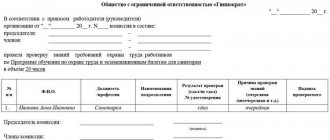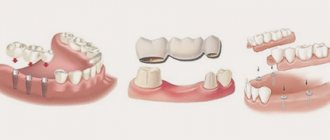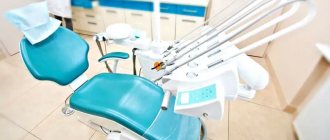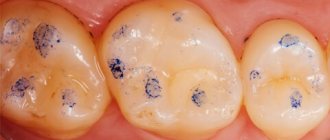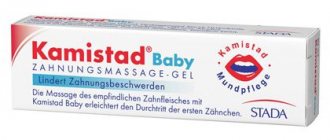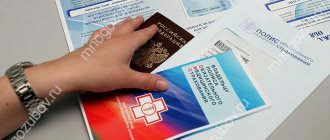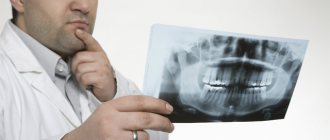In 2022, the standards for equipping a dental office have changed. Careful adherence to them guarantees the smooth operation of the clinic. If you are just planning to open a dental office, it will be much easier for you to equip it according to the new standards.
Of course, there is a necessary minimum that is required. But don't skimp. Only high-quality and reliable equipment will ensure safe work and save on repairs or possible replacement (cheap tools and materials fail quite quickly).
We’ll tell you more about the new rules for equipping a dental office right now.
General requirements for equipment and organization of a dental office
Information on the work of medical organizations can be seen in section 4 of sanitary and epidemiological requirements. The same standards apply to dental offices and clinics. Among the main ones are the following:
- Compliance with general federal hygienic standards regarding the presence of hazardous substances in the atmosphere and soil in the immediate vicinity of the building with the clinic located in it.
- Compliance with standards regarding room area depending on its function.
- Equipment of toilet rooms for staff and visitors.
- Carrying out interior decoration using wear-resistant and safe materials.
- Application of the latest engineering systems to equip the dental office of the clinic. So, in particular, the use of high-quality ventilation equipment is required to provide a sufficient volume of air for the work of dentistry.
- The optimal level of lighting in an organization for high-quality functioning.
- The presence of furniture that is resistant to regular sanitization and disinfection, which is carried out with special means and solutions for disinfection.
- The presence in a medical institution of a specially designated room for isolating infectious patients.
A standard dental office must have, at a minimum, a lobby, a dental doctor’s office, a staff room, a toilet, and a room for storing equipment and household supplies.
Stages of dental licensing
The applicant submits an application to the dental licensing authority. The application for permission is drawn up in the approved form. It is also accompanied by documents mentioned in the Regulations on licensing of certain types of activities. At the same time, we should not forget about the requirements and conditions that determine the specific features of dentistry, depending on its type (orthopedics, therapy, etc.).
When submitting an application, a legal entity or a person who has registered an individual entrepreneur must demonstrate that it has the necessary premises for carrying out medical activities, personnel, and qualified specialists capable of ensuring a sufficient level of safety when providing medical services or carrying out certain types of work.
All documentation in dentistry must comply with the requirements of SanPiN, GOST, SNiP, legislation and regulations.
Verifying compliance with license requirements and conditions
The body that is contacted for licensing dentistry has the right to inspect the premises and equipment, find out whether it really exists or whether its existence is only stated in the documentation. The verification can be formal (a simple check of documentation) and factual.
As a rule, it is the actual inspection that takes place, when the licensing authority inspects the premises and medical equipment on site.
Making a decision to issue a license
The government agency evaluates how dentistry meets licensing requirements and decides whether to issue a license or not. In this case, the government agency looks at how well the documents are completed and whether they comply with the requirements established at the legislative level.
Requirements for the premises and location of the dental office
When opening a large clinic, equipped with a hospital, an X-ray room, and a sterilization room, be prepared to undergo a strict inspection by the SES. The activities of a small office will not cause such checks, which means that its work is possible almost everywhere:
- on the 1-2 floor of a residential premises;
- in a separate building or block;
- in a built-in room or annex.
An apartment purchased for a dental office must be transferred to non-residential use. Unfortunately, this is a slow process that requires approval from both the SES and the fire department. Consent may also be required:
- Housing association.
- Department for the protection of architectural monuments.
- An environmental organization that has the right to request landscaping work on the territory.
- Traffic police, if coordination is necessary regarding the availability of parking for visitors to your office.
Renting an office that is already equipped with equipment will give you the opportunity to get straight to work much faster.
An office open in a residential building requires a separate entrance.
Restrictions that affect the selection of premises for a dental office certainly exist. Select premises that have:
- Ceilings from 2.6 m high.
- Utility networks with drinking water supply (premises where only process water is supplied will not pass the test).
- Area from 14m2. An additional 10 m2 is also required for each workplace and 7 m2 for a chair not equipped with a drill.
Additional space will be required:
- A lobby with a wardrobe and a medical reception desk, measuring at least 10 m2.
- Toilet room at least 3 m2.
- A room for employees with a dressing room from 6 m2.
- Pantry – 3 m2.
The requirements for the area of dental offices in Appendix No. 2 to the current SanPiN indicate that offices with less than 3 chairs can get by with one toilet for patients and employees. Having more chairs will require separate bathrooms.
The list of services for which you intend to obtain a license regulates the number of premises in your clinic or office. The number of seats also affects this factor.
Dental services for children will require a separate box with its own equipment and toilet room. It is prohibited to receive children and adults in the same room with alternating shifts.
Equipping a surgical dental office in a clinic will require a mandatory room with a “purulent” and “clean” zone.
Finishing, microclimate and communications of the dental office
Pay attention to the surfaces of the dental office: they should be flat, smooth, wear-resistant, made of material that is not afraid of constant treatment with disinfectants. The walls and floor should be connected in such a way as to avoid gaps where it is impossible to get dust and dirt.
You can choose linoleum as a floor covering, but skirting boards and sealing of the joints of the canvas are required.
Surfaces that may be wet, namely the bathroom, walls near sinks and equipment, must be covered with tiles.
The sink and cabinet walls need to be covered with:
- At least 1.6 meters from the floor,
- 0.2 m beyond the appliance or sink.
The choice of ceiling is yours (suspended or suspended), the main thing is that it is easy to wash and disinfect.
As a rule, walls should be painted in light and neutral colors, since other shades can distort the color of the patient’s tooth enamel, gums and blood as perceived by the doctor.
Using mercury-based amalgam to decorate walls, you can choose to cover it with plaster (if the wall is brick) or grout (panel), with the addition of 5% sulfur to bind mercury fumes. At the same time, any decorations on the walls with such a coating are prohibited.
Ventilation and heating systems are one of the main points that need to be paid attention to. An autonomous heating system is required to maintain air purity in accordance with the indicators of contamination of the air with pathogenic microorganisms in accordance with the maximum permissible concentrations prescribed in SanPiN.
Requirements for temperature and humidity indicators:
- Above +18°C in winter and below +25°C in summer.
- Relative humidity from 40 to 60%.
- The speed of movement of air masses is 0.2 m/s.
If the area of the dental clinic is less than 500 m2, the following is allowed:
- Natural ventilation using vents, therefore, easy-to-use transoms with easy access to them are needed.
- Supply and exhaust system arrangement.
- Equipped with split systems that are acceptable in medical institutions, provided that the filters are cleaned every 6 months.
All utility networks in dental offices must be hidden. Any problem in the ventilation system must be addressed immediately. Microbiological and chemical indicators of air should not violate the requirements of SanPiN.
It is prohibited to install the ventilation system in such a way that contaminated air enters the “clean” area. Therefore, when planning it, keep this in mind.
Hot and cold water supply is necessary for a dental office. If there is no centralized water supply in the premises, provision from other sources approved by the conclusion of the SES is allowed.
Standard equipment and equipment of a dental office
The standards that were already mentioned earlier and SanPiN 2.6.1.1192-03 dictate the selection and installation of equipment in the dental office.
A one-way flow of natural light requires the placement of chairs along a light-carrying wall. Install opaque partitions of 1.5 m between chairs.
It is necessary to have equipment for sterilization of instruments and sinks. It can be two-section or separate.
One of the sinks or compartment is used for washing the hands of staff, and the other for processing equipment. It is required to equip the dental office with an air disinfection unit and bactericidal lamps.
Planned work with gypsum material in your office will require the installation of gypsum traps that capture this material from wastewater.
You should pay attention to the level of noise and vibration indicators when operating equipment in your office. It is regulated by Resolution of the Chief Sanitary Doctor No. 58 dated May 18, 2010 (as amended by No. 76 dated June 10, 2016), which can be found in Appendix No. 9 to SanPiN.
A special box, in which the chair’s connection to the sewerage system, water supply, electrical network, vacuum line and compressed air is mounted, is located within 50 cm of the desktop.
In 2022, new requirements for organizing the activities of X-ray rooms appeared, which came into force on 01/01/2021 in accordance with the order of the Ministry of Health dated 06/09/2020 No. 560n.
New requirements for equipping a dental office in accordance with the order of the Ministry of Health, in particular for the operation of an X-ray room, have definitely complicated the activities of existing clinics. Firstly, to obtain a license to operate a clinic, you will definitely need your own X-ray machine.
The clinic does not have the right to require clients to undergo this procedure in another organization. An existing X-ray room will require equipment such as a visiograph and an orthopantonograph. While previously it was possible to use only one thing.
Unfortunately, this is not the most important difficulty that dental clinics have to overcome. According to SanPiN 2.6.1.1192-03, when installing any new device in an X-ray room, an additional area of at least 4 m2 will be required. The initial area required to install the X-ray machine must be greater than 8 m2.
Thus, the new requirements set the minimum area of this office to be 12 m2.
Let us note another problem - the description of the resulting images. Since this is the direct work of a radiologist, a dentist is prohibited from doing this. Today, radiologists can work in a clinic remotely and provide a description of the image within 24 hours, as regulated by current legislation.
But what to do in difficult cases when the doctor needs additional images during treatment? He may have to wait a day before he can continue treating the patient.
All innovations regarding changes in regulatory documents in dentistry are reflected in dental journals. Accordingly, there you can see the changes that affected the composition of the emergency first aid kit in dentistry. Current regulations require the availability of first aid kits for emergency care for such conditions in patients as:
- general complications;
- anaphylactic shock caused by dental treatment;
- risk of contracting HIV infection or hepatitis;
- individual complications that need to be addressed urgently.
The composition of first aid kits for children and adults is definitely different, which is regulated by the relevant regulatory framework. Children are undergoing treatment by order of the Ministry of Health dated November 13, 2012 No. 910n. The previous list of medications for adults was compiled in accordance with the order of the Ministry of Health dated December 7, 2011 No. 1496n.
But in January 2022, it also lost legal force, and instead it is now necessary to be guided by the order of the Ministry of Health dated July 31, 2020 No. 786n. Consequently, in dental clinics providing services to adults, it is necessary to update the composition of first aid kits in order to comply with the standards of current legislation.
Here is an approximate standard for equipping a dental office for licensing. Since the full list contains over a hundred items, we will make do with an abbreviated version.
| Dental office equipment standard | |
| Dental clinic (for general practice office) | |
| Name | Quantity |
| Apparatus for diagnosing pulp vitality (electroodontometer) | At least 1 per office |
| Apparatus for determining the depth of the root canal (apex locator) | At least 1 per office |
| Ultrasonic dental plaque removal device (scaler) if not available in MRU and US | At least 1 per office |
| Dental burner (alcohol, gas, piezo) | At least 1 per office |
| An assortment of eye probes for probing the duct of the salivary glands | At least 3 titles per office |
| Dental injector for carpule anesthesia | At least 3 per doctor’s workplace |
| Chambers for storing sterile instruments (in the absence of a packaging system) | At least 1 per office |
| And other positions | Total 102 |
In addition, it is necessary to register medical equipment that will be used in your dental clinic in accordance with Article 38 of the Federal Law of November 21, 2011 No. 323-FZ “On the fundamentals of protecting the health of citizens in the Russian Federation” (Federal Law No. 323).
Part 4 of Article 38 of Federal Law No. 323 states that medical devices must be entered into the state register. Next, you receive a perpetual registration certificate that confirms this action. This act should be carried out in connection with the Decree of the Government of the Russian Federation of December 27, 2012 No. 1416 “On approval of the Rules for state registration of medical devices.”
How to open a dentistry: step-by-step plan
Documents required for dental licensing:
- Constituent documents: charter, constituent agreement, protocol, regulations, decisions on the creation of an enterprise, appointment of a director, protocol of founders or decisions on amendments (if any changes are planned to be made to the constituent documentation).
- Registration documents: certificates of state registration as a legal entity, certificates of amendments (if changes are made to the constituent documentation), certificates of registration with the tax authorities.
- Sanitary and epidemiological conclusion that the services provided and work performed in dentistry comply with sanitary standards and rules. If there are separate facilities, sanitary and epidemiological certificates must be issued for them as well.
- Documents that confirm that the qualifications of employees of a medical institution do not contradict the requirements and conditions for licensing dentistry: a diploma of secondary or higher medical education, certificates, work record books, marriage certificates (if the last name has changed).
- Documents that confirm that the qualifications of the head of a legal entity and (or) a person authorized by him meet the requirements and conditions for licensing: a diploma of higher medical education, certificates, certificates of advanced training, a work book confirming work experience in the dental industry for at least five years , marriage certificate (if the last name has changed).
- Documents that confirm that the premises for medical activities are owned or in accordance with other legal grounds: lease agreements, certificates of ownership, BTI floor plan with explanation.
- Documents that confirm that the appropriate organizational and technical conditions for material and technical equipment have been created in dentistry. At the same time, the entire range of tools, equipment, as well as transport and documents ensure the use of medical technologies that are allowed for use by the Federal Law on supervision in the field of healthcare (this includes a list of used medical equipment, which indicates the percentage of wear, a maintenance agreement with the company , which is engaged in the maintenance of medical equipment, on the license of the organization responsible for the maintenance of medical equipment, on the certificate of the technical condition of medical equipment).
- Documents that confirm the fact of payment of the license fee (the cost of processing the application is 7,500 rubles).
- Power of attorney.
- Information about the executive body of the constituent entity of the Russian Federation, which is involved in licensing medical activities, contains regulatory legal acts of the constituent entities of the Russian Federation. These authorities are different for each entity (Ministry of Health or Department of Health).

